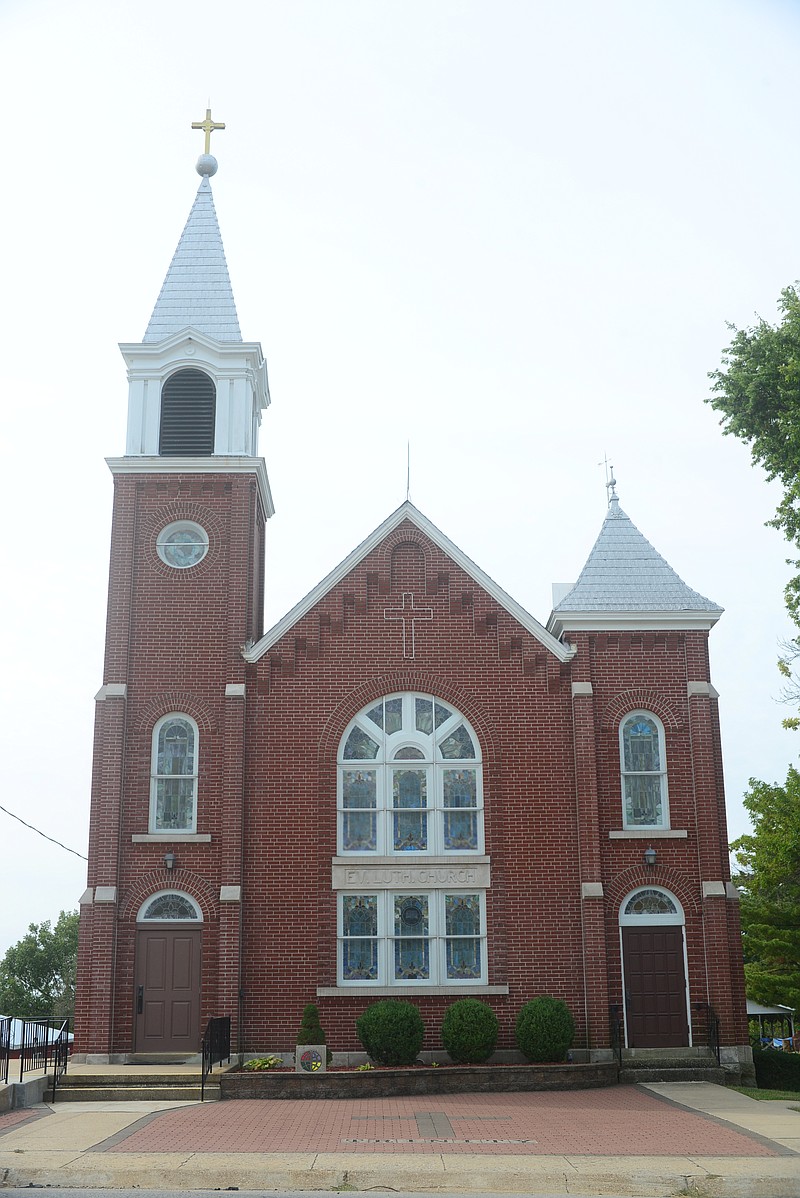RUSSELLVILLE - In a milestone year in its storied history of more than a century, Trinity Lutheran Church in Russellville has been nominated for the National Historic Register as a historic district.
The nomination includes the church building and its original lot, parsonage, a one-room schoolhouse and parish hall, all of which are the original buildings, save for some modern updates to their interiors such as restrooms and electricity. The nomination coincides with a milestone anniversary for Trinity Lutheran, as the church celebrates in 2020 the 125th anniversary of its founding.
Roger Jungmeyer, a professor of history at Lincoln University, prepared the nomination for the church. It was approved at the state level about a month ago and now advances to the U.S. Department of the Interior for approval. Jungmeyer said once a nomination reaches the federal level, it must be acted upon within 90 days.
"If we assume that this is going forward to them here in the middle of December, we should hear (back) by March," Jungmeyer said.
This is a process Jungmeyer is familiar with, as he's also prepared successful nominations for historic places in Taos here in Cole County and Cedron in nearby Moniteau County in recent years.
Jungmeyer grew up in Russellville, so he was already familiar with the church before preparing the nomination.
"It's unique in the sense that it has all of the original buildings as a complex, which is kind of rare because over the years, oftentimes that one-room school (may be) demolished and things are altered architecturally on the exterior and modernized," Jungmeyer said.
However, in this case, a look at photos of the structures from 1912 compared to now reveals everything looks the same, Jungmeyer said.
The parsonage was the first building constructed in 1911 on the church's 4 acres of land in southeastern Russellville. This was followed by the schoolhouse and church in 1912 and, a few decades later, the parish hall in 1940, which remains in use today. Trinity Lutheran's beginnings date back even further - to Sept. 1, 1895.
The only additions, Jungmeyer said, have been quality-of-life upgrades like protective glass over the church building's stained glass windows, but the integrity of the structures themselves remains unchanged.
"It's essentially the same," Jungmeyer said. "There are some changes, but nothing that really affects the historic value of it all."
Because Trinity Lutheran has a whole complex rather than just a church building, it has been nominated as a historic district rather than a historic site, Jungmeyer said.
Cedron was similarly nominated as a historic district since it had a church and a schoolhouse, while Taos was a historic site.
Trinity Lutheran's twin-tower church type is one of the least common church types found statewide, and they are also more often found in urban rather than rural areas, Jungmeyer said. In fact, he said, this type of church construction is likely the least common in Cole County.
Additionally, Trinity Lutheran's retention of all the buildings in its complex is increasingly rare in rural areas of the state, Jungmeyer said.
Jungmeyer said Trinity Lutheran's approval at the state level as a historic district is significant in itself and something the community should be recognized for.
"If there's never anything said about it again, then at least people know that it is something that's unique right here in their own community," Jungmeyer said. "It means a lot to the rural community, (the same with) the Cedron one, the Taos one. That's something they're proud of because generations have kept it and maintained it and passed it down."

